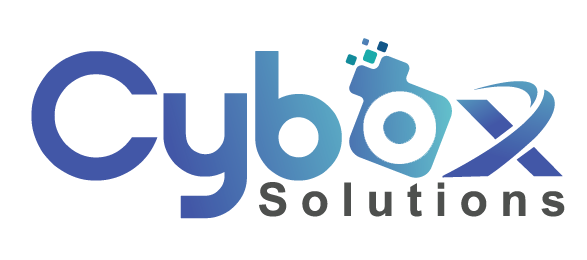A Guide for Clean and Accessible Code
In the world of web development, writing clean, maintainable, and accessible code is essential for both developers and users. One of the best ways to achieve this is by using semantic HTML—a practice that ensures your HTML code not only works but also conveys meaning to browsers, developers, and assistive technologies. Let’s dive into the concept of semantic HTML, its importance, and how you can write it effectively.
What is Semantic HTML?
Semantic HTML refers to the use of HTML elements according to their meaning and structure, rather than just how they appear. When writing semantic HTML, the goal is to describe the content and the role each element plays on the page, providing additional information to the browser and search engines about what the content is, rather than just how it should look.
For example, instead of using a <div> for everything and styling it with CSS, semantic HTML uses specific tags like <header>, <article>, or <nav> to clearly define what those sections of the webpage represent.
Why is Semantic HTML Important?
- Improved Accessibility
Semantic HTML enhances accessibility by helping assistive technologies (such as screen readers) better interpret and present the page structure to users. For instance, using<nav>for navigation sections and<main>for the core content makes it easier for screen readers to navigate through a page. - Better SEO
Search engines use the structure of a page to understand its content. Using proper semantic elements like<article>,<section>, or<header>helps search engines categorize content and improve the site’s SEO ranking. - Easier Maintenance and Readability
Clean and semantic code is easier for developers to read, debug, and maintain. This makes collaboration smoother, and ensures that even when returning to old code after some time, the structure and meaning are clear. - Browser Compatibility
Browsers render semantic HTML more consistently, providing a better user experience across various devices and screen sizes.
Key Semantic HTML Elements
Here are some of the most commonly used semantic HTML elements that every developer should be familiar with:
<header>: Represents the header of a webpage or a section. It often contains navigation links, site logos, or introductory content.<nav>: Defines a block of navigation links.<main>: Represents the main content of the webpage. It should contain the unique content of the page, excluding headers, footers, and navigation links.<section>: Represents a standalone section of content, typically with a heading, and can be used to break up the content into logical parts.<article>: Represents an independent piece of content that could stand alone (e.g., a blog post or news article).<aside>: Represents content that is tangentially related to the main content, such as sidebars or callout boxes.<footer>: Defines the footer of a webpage or a section. It usually contains copyright information, social media links, or navigation.<figure>and<figcaption>: Used to mark up visual content like images, charts, or diagrams and their captions.
Best Practices for Writing Semantic HTML
- Choose the Right Element for the Job
Always use the most appropriate semantic tag for the content you are presenting. Don’t use<div>or<span>just because it’s easier to style—choose elements that add meaning. - Avoid Overuse of Divs
While<div>is a versatile element, it should be used sparingly and only when there’s no better semantic element. Overusing<div>can clutter your code and diminish its semantic value. - Use
<h1>through<h6>for Headings
Use heading tags (<h1>,<h2>, etc.) in a hierarchical manner to clearly define the structure of your content. A single<h1>should be used for the main title, followed by progressively smaller headings as needed. - Keep Your Code Readable
Proper indentation, comments, and using semantic elements ensure that the code is easy to read and understand. This will help with future maintenance and collaboration with other developers. - Leverage ARIA Attributes When Needed
Although semantic HTML goes a long way in making your website accessible, ARIA (Accessible Rich Internet Applications) attributes can provide additional information for assistive technologies. However, these should only be used when semantic HTML alone can’t communicate the required functionality.
Example of Semantic HTML
Here’s an example of a simple webpage using semantic HTML:
<!DOCTYPE html>
<html lang="en">
<head>
<meta charset="UTF-8">
<meta name="viewport" content="width=device-width, initial-scale=1.0">
<title>Semantic HTML Example</title>
</head>
<body>
<header>
<h1>Welcome to My Blog</h1>
<nav>
<ul>
<li><a href="#home">Home</a></li>
<li><a href="#about">About</a></li>
<li><a href="#contact">Contact</a></li>
</ul>
</nav>
</header>
<main>
<article>
<h2>Understanding Semantic HTML</h2>
<p>Semantic HTML is important for creating web pages that are structured, accessible, and maintainable.</p>
</article>
</main>
<aside>
<h2>Related Articles</h2>
<ul>
<li><a href="#">How to Improve Web Accessibility</a></li>
<li><a href="#">SEO Best Practices for 2024</a></li>
</ul>
</aside>
<footer>
<p>© 2024 My Blog. All rights reserved.</p>
</footer>
</body>
</html>Conclusion
Writing semantic HTML is essential for creating accessible, maintainable, and SEO-friendly websites. By using the right HTML elements to describe your content, you’ll not only improve your site’s usability but also make it easier for other developers and search engines to understand. Stick to the best practices, and you’ll have a clean and meaningful structure that stands the test of time!
Happy coding!







No comment yet, add your voice below!